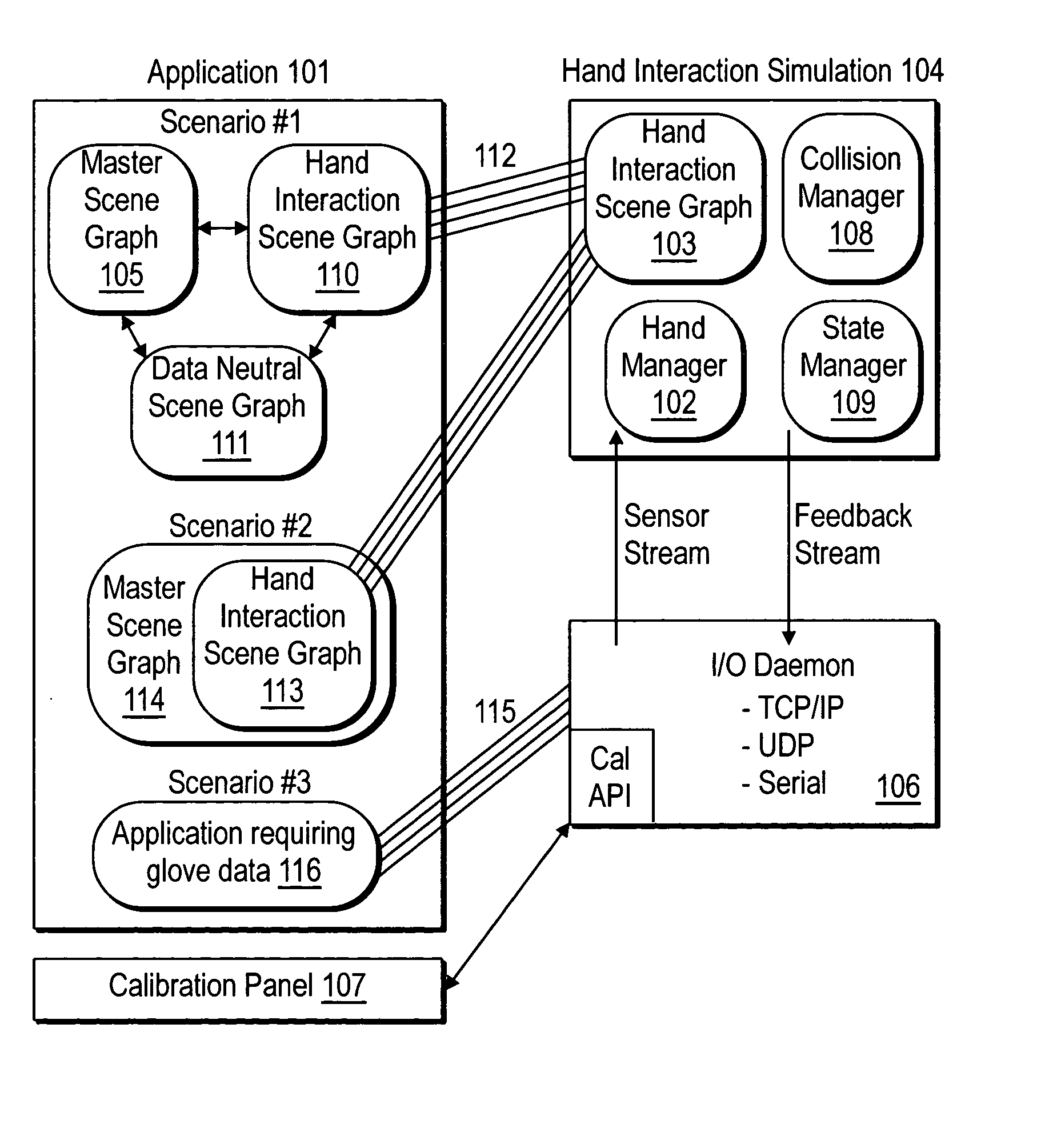System and method for constraining a graphical hand from penetrating simulated graphical objects
a graphical object and graphical hand technology, applied in the field of system and method for constraining a graphical hand from penetrating simulated graphical objects, can solve the problems of limited degree of freedom of movement of the device, lagged software for whole-hand input interfaces, and complex modeling of computer-generated environments
- Summary
- Abstract
- Description
- Claims
- Application Information
AI Technical Summary
Problems solved by technology
Method used
Image
Examples
embodiment
[0086] Embodiment
[0087] An embodiment which illustrates the functionality of the VirtualHand Toolkit consists of a simulation of a virtual control panel (FIG. 2). The user may interact with the control panel and buttons using a CyberGlove instrumented glove, and optionally with a CyberGrasp force-feedback device. The control panel contains grounded objects and surfaces, in addition to push buttons and toggle switches. When the CyberGrasp force-feedback device is used, the user can also feel the resistance of the buttons being pressed.
[0088] FIG. 4 is a link-revolute-joint model of the human hand (400). The forearm link (401) is connected to the wrist yaw joint (402) which is connected to the wrist pitch joint (403). This joint is connected to the metacarpus link (404) which extends to connect to the thumb roll joint (405). This joint is connected to the thumb abduction joint (406) which is connected by the thumb metacarpal link (407) to the thumb metacarpal roll joint (408). This jo...
PUM
 Login to View More
Login to View More Abstract
Description
Claims
Application Information
 Login to View More
Login to View More - R&D
- Intellectual Property
- Life Sciences
- Materials
- Tech Scout
- Unparalleled Data Quality
- Higher Quality Content
- 60% Fewer Hallucinations
Browse by: Latest US Patents, China's latest patents, Technical Efficacy Thesaurus, Application Domain, Technology Topic, Popular Technical Reports.
© 2025 PatSnap. All rights reserved.Legal|Privacy policy|Modern Slavery Act Transparency Statement|Sitemap|About US| Contact US: help@patsnap.com



